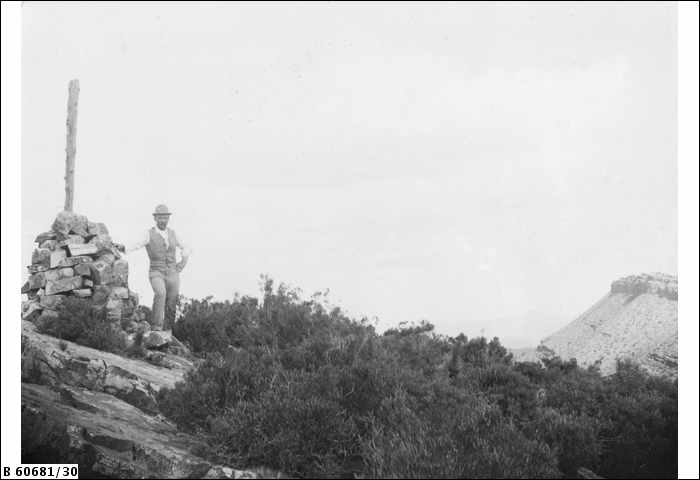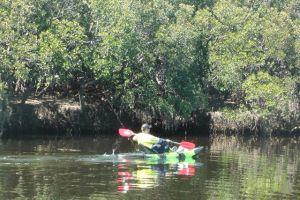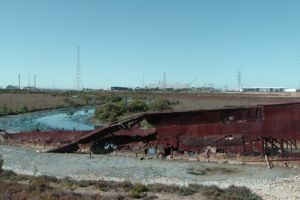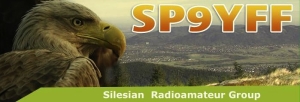Today I contacted the South Australian Lands Titles Office, Department of Planning, Transport, and Infrastructure, and also the SA Legal Services Commission, and queried them re the legality of access to privately owned land which has a trig point situated on it. I had heard rumours that if there was a trig point, then the land owner was required to allow access to the public to the trig point. So today I sought some official clarification on the South Australian perspective.
Firstly, what is a trig point ? Trig points, sometimes called Trig Stations are hilltop survey marks. They are so called because trigonometry is used to calculate their positions. Their full and correct name is Trigonometric Points of Stations. In Australia, trig points consist of a permanently marked point on the ground, and usually have a beacon or a cairn of rocks directly above them so that the trig point can be seen from a distance.
Trig points are known as trigonometrical stations in North America, triangulation pillars in the UK, trig beacons in South Afirca, and trig points or stations here in Australia.
Trig points are built on the most prominent geological formation in the surrounding countryside so that they are visible for many kilometres. By sighting two or more trig points, and then taking a compass bearing, surveyors can accurately determine their position on a map when plotting boundary lines of property, etc.
The early explorers of Australia plotted their position by observations of the sun and stars and related this to visible landmarks such as prominent hills, rivers or local settlements. However, as the colony of Australia expanded, so did the need for accurate maps.
In the early days, trig stations consisted of a brass plug which was fixed into concrete. It had a large cairn of rocks erected over the top of it, and a pillar with metal vanes standing upright over the mark. To access the brass plug, surveyors ere required to dismantle the cairn and then reassemble it afterwards.
A man standing beside the trig, Mt Samuel, Flinders Ranges, S.A. c. 1898.
Photo courtesy of State Library, S.A.
Two men standing beside the trig, Mt Wudinna, SA, c. 1911.
Photo courtesy of State Library, S.A.
This resulted in a concrete pillar version which has a solid concrete foundation and a pillar which is about 1.3 metres high. It has a vane on the top which can be removed by surveyors to access a threaded spigot on top to mount survey equipment such as theodolites, Electronic Distance Measuring devices, and GPS antennas.
I have noted in my SOTA travels, that many trig points are in dire need of some tender loving care. Apparently this is a national trend, from what I read on the internet. With all the modern technology available such as Global Navigational Satelite Systems (GNSS) and Continuosly Operating Refernce Station (CORS) networks, trig stations are become less relevant to surveyors. Governments are loath to spend money as the upkeep required on trig stations has proved to be unmanageable.
There is an excellent resource on the Queensland Govt website, entitled ‘Surveying history’…..
http://www.nrm.qld.gov.au/museum/surveying_history/index.html
And another one entitled, ‘Life of the surveyor in the field’….
http://www.nrm.qld.gov.au/museum/surveying_history/surveyors-work.html
And should you wish to view where all the trig points are in South Australia…check out the map at the DPTI website, at the following link…..
Going back to my original question about access to privately owned land which has a trig point on it……….Under the Survey Act 1992, land surveyors have the right to enter onto private land to access trig points.
The Act states that a survey mark is…..
(a) a mark or peg of a kind specified in survey instructions ion force under this Act that is placed on or in land for the purposes of defining a boundary of the land; or
(b) a permanent survey mark.
Section 46 of the Survey Act 1992 states…..
A surveyor, or a person authorised in writing by a surveyor, may-
(a) at any reasonable time, enter any land for the purpose of carrying out work in connection with a survey; and
(b) take such action as is necessary to enable the survey to be carried out effectively (including excavating or breaking the surface of land to the extent necessary to uncover or place a survey mark).
It is also an offence under the Act to hinder or obstruct a person in the exercise of a power conferred by the Act.
So, the rumours are INCORRECT !
You cannot enter land that has a trig point on it, unless you have the permission of the land owner.
In England, there is the freedom to roam, or everyman’s right. This relates to the general public’s right to access certain public of privately owned land for recreation and exercise. In both England and Wales, public access rights apply to certain categories of mainly uncultivated land—specifically “mountain, moor, heath, down and registered common land.” Developed land, gardens and certain other areas are specifically excluded from the right of access. Agricultural land is accessible if it falls within one of the categories described above. Some other European countries have similar rights of access. Here in Australia, we have no such rights of access.
There are some exceptions to access across privately owned land here in South Australia. This includes the Heysen Trail, which is a long distance walking trail (1,200 km) stretching from the Flinders Ranges, via the Adelaide Hills, to the Fleurieu Peninsula. Part of the trail traverses private property. However this access would be documented and possibly included as right of way in the Title.
Section 17 of the Summary Offences Act 1953 of South Australia states…..
(1) Where-
(a) a person trespasses on premises; and
(b) the nature of the trespass is such as to interfere with the enjoyment of the premises by the occupier; and
(c) the trespasser is asked by an authorised person to leave the premises,
the trespasser is, if he or she fails to leave the premises forthwith or again trespasses on the premises within 24 hours of being asked to leave, guilty of an offence.
References.
Australian Lesson Activities – Maths, viewed 31 January 2014, http://www.expedition360.com/australia_lessons_maths/2001/09/trig_points_and_geometry.html
State Library of South Australia, viewed 31 January 2014, http://www.slsa.sa.gov.au
The Friends of the Heysen Trail and Other Walking Trails, viewed 31 January, 2014, http://www.heysentrail.asn.au/heysen_trail/faq.php
The Intergovernmental Committee on Surveying and Mapping, viewed 31 January, 2014, http://www.icsm.gov.au
Wikipedia, 2014, Heysen Trail, viewed 31 January 2014, http://en.wikipedia.org/wiki/Heysen_Trail
Wikipedia, Triangulation station, viewed 31 January 2014, http://en.wikipedia.org/wiki/Triangulation_station























































